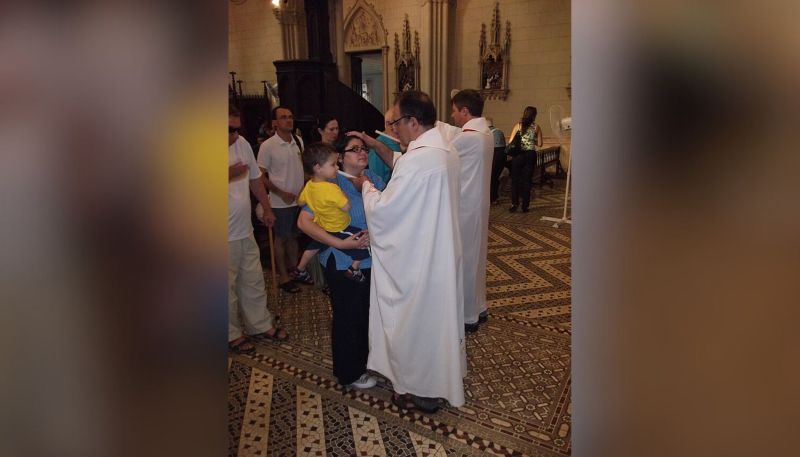ACI Prensa Staff, Feb 3, 2024 / 04:00 am (CNA).
Every year on Feb. 3, the Church celebrates the feast of St. Blaise. Since he is the patron saint of those who suffer from throat ailments (and the doctors who treat them), many parishes around the world offer the “blessing of throats” in his honor.
A bishop and eventual martyr, Blaise of Sebaste began his spiritual journey as a hermit. He was a physician and known to be a miracle worker. He practiced the medicine of his time and is included in the group of the “14 holy helpers” of the Catholic Church — called that because they are considered effective intercessors against certain ailments of the body and soul.
St. Blaise is the patron saint of the Republic of Paraguay and his devotion is widespread in Latin America, where he is not only beloved but also has given rise to countless popular traditions.
The bishop who lived in a cave
Blaise was named bishop of Sebaste, Armenia, and very popular among his contemporaries for performing numerous miraculous healings. He lived as a hermit even after being named bishop, converting the cave in which he lived — located in the forest of Mount Argeus — into his episcopal see.
Tradition has it that one day Bishop Blaise saved a child who had choked on a fish bone — hence the ancient custom of blessing the throats of his devotees on his feast day. That same fact also made him the patron saint of otorhinolaryngologists and those who suffer from throat ailments.
Other stories speak of Blaise’s love for animals, whom he also cured. According to an ancient medieval tale, sick or injured animals came to his cave on Mount Argeus to be cured and in return, they did not harm him or bother him when he prayed.
Summoned to martyrdom
Blaise’s life and ministry ended when Agricola, governor of Cappadocia, initiated one of the last persecutions against Christians. When a group of his hunters went to look for animals in the forest of Argeus for some “games,” they found many of them grouped outside the cave of St. Blaise. The saint was praying at the time and was taken prisoner.
Placed in the presence of Agricola, he was told to renounce the Christian faith, but he flatly refused the proposal. He was immediately locked up in a dungeon, where he remained for some days preaching among the captives and those condemned to death. There, he also cured the sick and baptized those who wanted to become Christians.
According to the Acts of St. Blaise, the hermit bishop was condemned to die by drowning but, when he was thrown into the waters, he began to walk on them, as Jesus Christ himself once did. He was then led to the scaffold, tortured, and finally beheaded. He died a martyr in 316 A.D., in the time of the Roman emperor Licinius.
This story is from ACI Prensa, CNA’s Spanish-language news partner. It has been translated and adapted by CNA.




